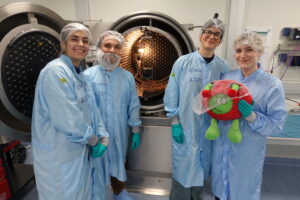On Friday 15th of December, PoliSpace held a great event. We had the chance to connect with Dr Giuseppe Cataldo, who spoke about the Mars Sample Return Campaign. After the conference we could reach him and ask some more questions to know more about him and his life. You will know everything about the interview in our next article, but now let’s step back and see what MSR Campaign is.
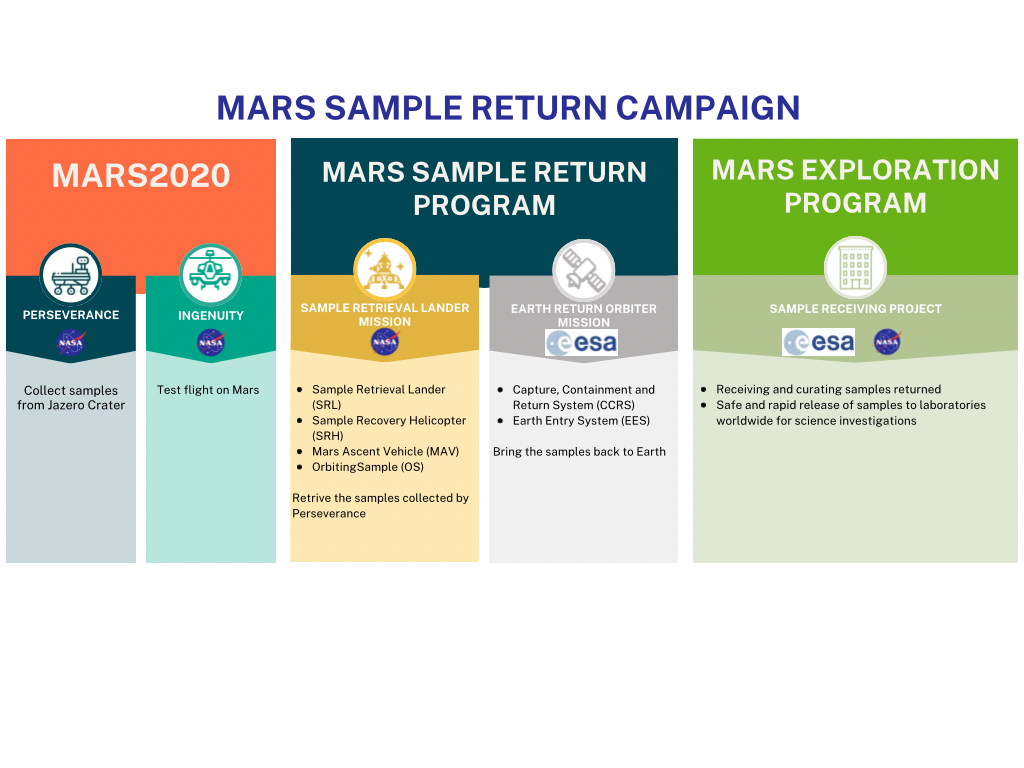
Long story short, the overall campaign is named Mars Sample Return Campaign and it is composed of three programs: MARS2020, Mars Sample Return Program and Mars Exploration Program (watch out! campaign is the hat, and missions and programs stay below it). MARS2020 is known to the public for being the mission that carried the Perseverance rover and the Ingenuity drone to Mars. Ingenuity’s mission was to assess the feasibility of flight on the planet, while Perseverance’s was to collect atmosphere and terrain samples to be retrieved by a subsequent mission; the latter is the MSR. MSR itself is composed of two launches each carrying many payloads. The first to be launched will be the one carrying ERO (Earth Return Orbiter) of which CCRS and EES are the payloads, but the first to reach the Red Planet will actually be the SRL mission. Sample Retrieval Lander mission transports the SRL that will handle the samples and put them into the MAV (Mars Ascent Vehicle) to launch them to Martian orbit where the OS (Orbiting Sample) will be jettisoned. The CCRS (Capture, Containment and Return Sample) fitted in ERO will catch the OS and move it into the EES (Earth Entry System) for reentry. Finally, the samples will be transported to a Sample Receiving Facility (SRP) for analysis and investigation.
Perseverance
On the 18th of February 2021, after 204 days Perseverance rover landed in the Jezero Crater on the Red Planet. But why did we want to collect samples from Mars?
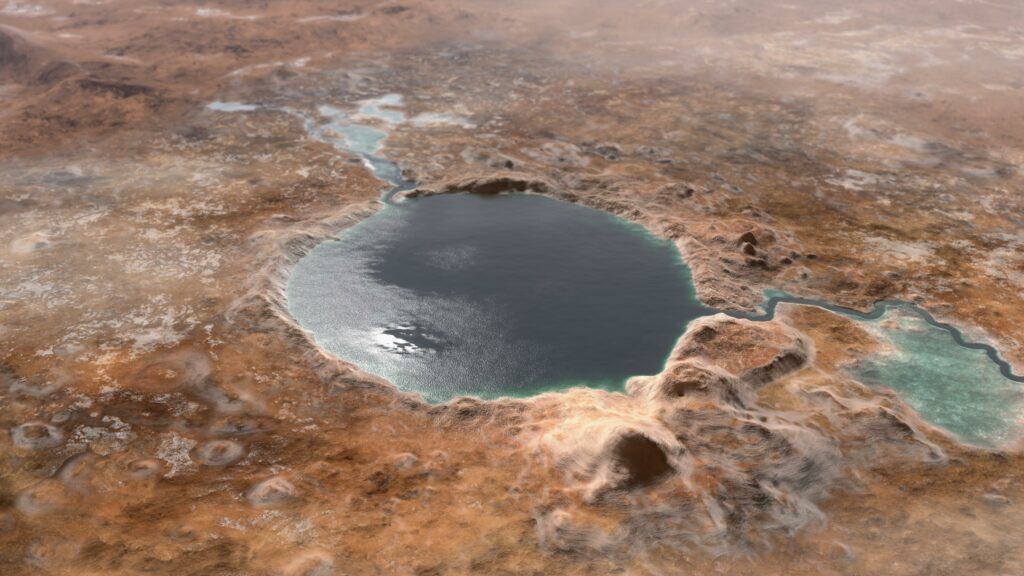
Well, Jazero Crater appears to be an ancient lakebed which around 3 billion years ago presented, very likely, a warmer and wetter climate and thus it was probably suitable for life of some kind. In the same period, life was blooming on Earth, so collecting those samples will provide us, on one side, more information on Mars and, on the other, it will possibly be a snapshot of our planet, giving us information about the origin of life on Earth.
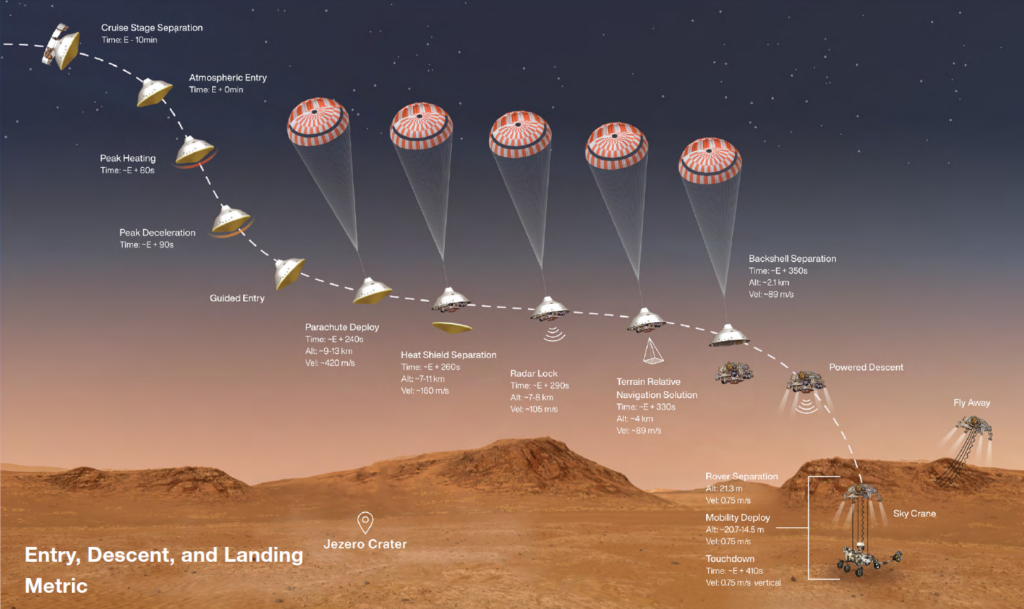
Perseverance and its lander carried with them many innovative technologies but also some well assessed ones. During the last part of the reentry, for example, the Terrain Relative Navigation Solution allowed the spacecraft to perceive the terrain beneath, select the best landing spot and guide the lander to that target. Once there, the propellers stabilized it at 20 m lowering the rover through some cranes; as soon as the rover touched down, the ropes were released and the lander flew away to guarantee the safety of Perseverance.
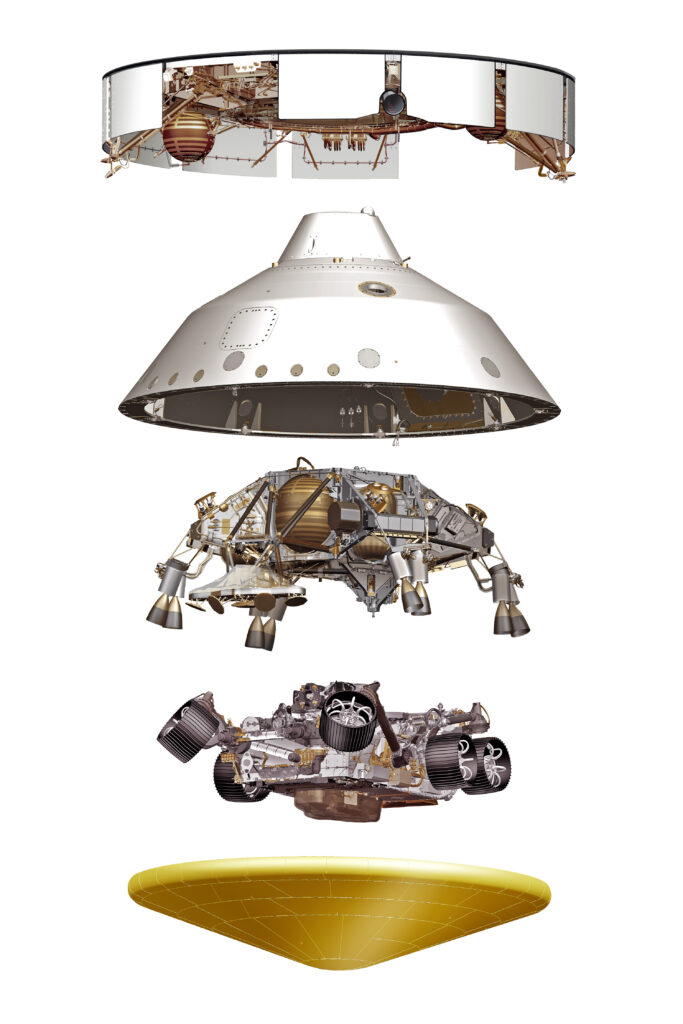
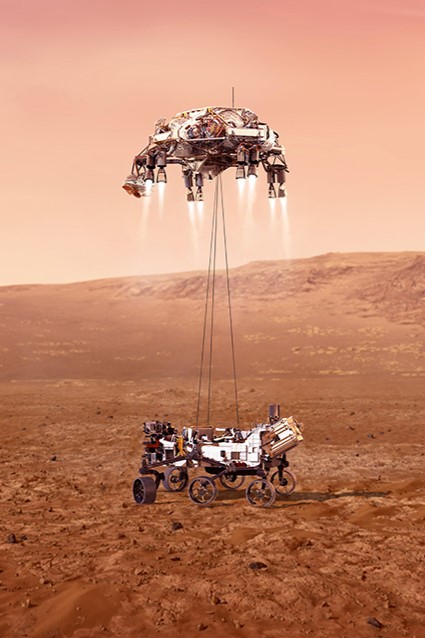
The rover itself is a conglomerate of incredible technologies. Nuclear batteries supply heat and electricity through the decay of plutonium-238; thus, energy sourcing does not depend on the sun and it is not affected by dust deposition as it usually happens with solar panels. This technology is well assessed since it has been used for decades for the Apollo program and for Voyager, Galileo, Cassini and many other missions. Moreover, it could possibly work for 14 years, much more than the mission duration.
Looking at the sensors and instruments, Perseverance is equipped with 23 cameras in different positions and with different capabilities, microphones and even a robotic arm to collect and handle the samples. The robotic arm is fitted with SHERLOC, an assembly composed of a camera, a spectrometer and a laser used to analyze the samples in the same way Sherlock Holmes would investigate a crime scene. (By the way, the acronym stands for Scanning Habitable Environments with Raman & Luminescence for Organics & Chemicals, but I bet they first decided the acronym and then tried to justify it… NASA’s engineers love those kinds of things, I suppose).
Another interesting technology on board is MOXIE which, despite having a name that sounds like the name of one of Santa’s elves, actually means Mars Oxygen In-Situ Resource Utilization Experiment. This incredible piece of equipment will assess its capability of producing oxygen from the carbon dioxide in the atmosphere, a milestone for future manned exploration.
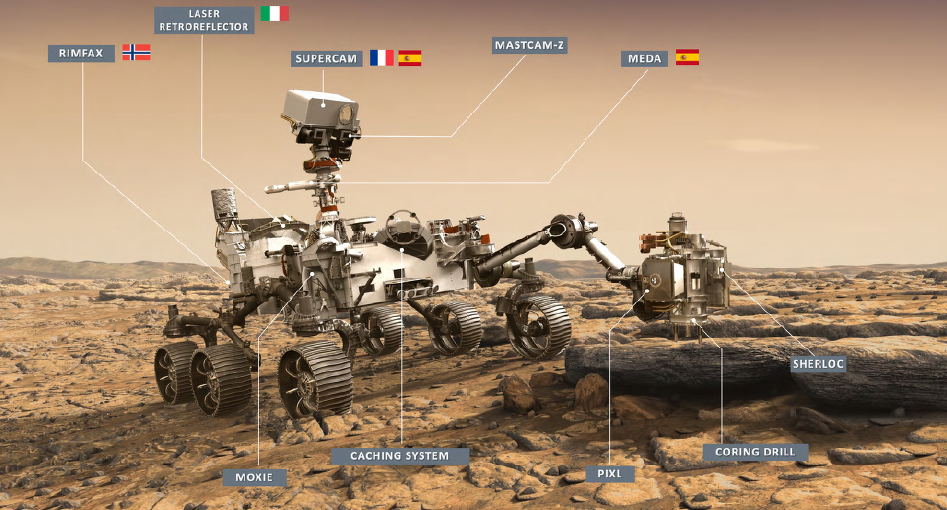
Perseverance also carried a drone, Ingenuity, there to evaluate the possibility of flying in extreme conditions like the Martian’s. Its aspect may look funny, but it is not at all. Flying in such an environment as Mars’ one is quite challenging. We will not go into much detail, but here are some reminders from the aerodynamic lectures. An object in order to fly requires balancing its weight through an opposite force called lift; straight forward, it’s not rocket science!
![]()
And now the issue is clear, here is where being a NASA engineer makes the difference. While the weight on the Red Planet is one-third of the one on Earth, that is good, the air density there is less than 1% and that is very, very… very bad… unbelievably bad. To better understand how hard this condition is, just think that to obtain the same situation here on Earth, a helicopter should fly at 28 km, twice the ceiling of an airliner and an altitude never achieved before by a helicopter. Engineers are not known as humble, but apparently, the Ingenuity Team was. NASA was expecting 5 m of maximum altitude and they exceeded 24 m, 90 seconds of flight and they achieved 169.5 seconds, a range of 300 m, but they outperformed it with an astonishing 704 m. Ingenuity was an extraordinary test.
Up to now we only talked about the landing and the rover, so you may wonder where the return kicks into the story. Smart guy, here we are.
During its mission, Perseverance has collected 23 samples (at least on the day we are writing) but not all of them have been stored in its belly. The mission involves releasing samples in prescribed depot areas when the control team decides to. Differentiating the depot sites ensures that there will be specimen backups in case of failure of any part of the mission.
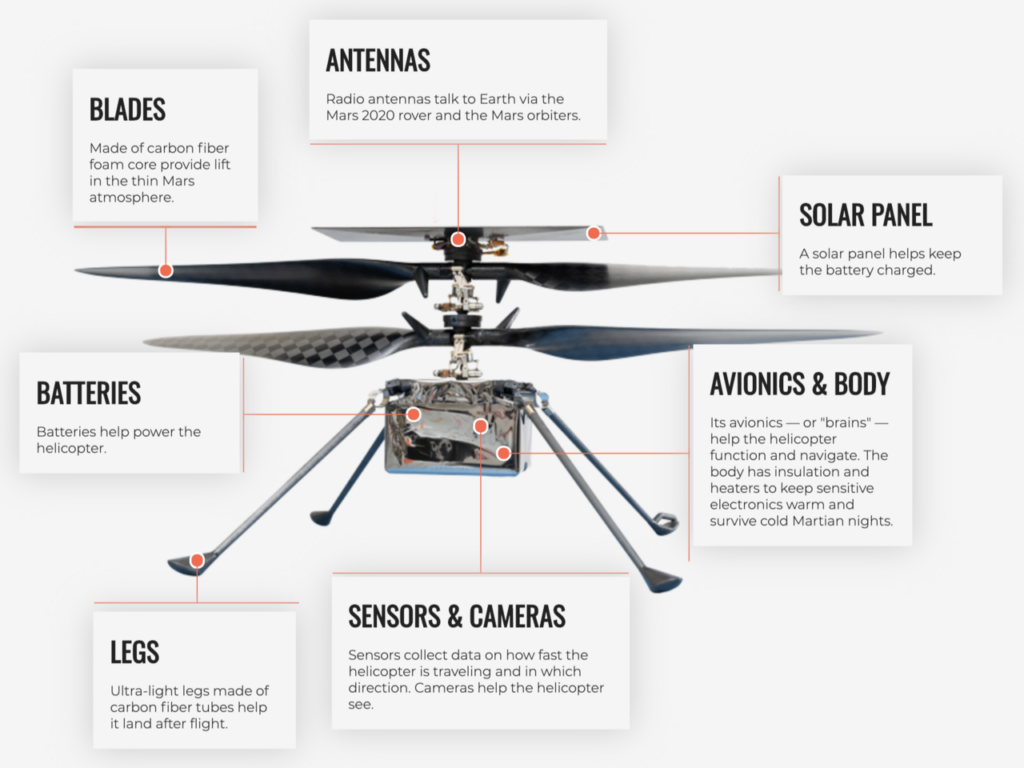
Mars Sample Return Program
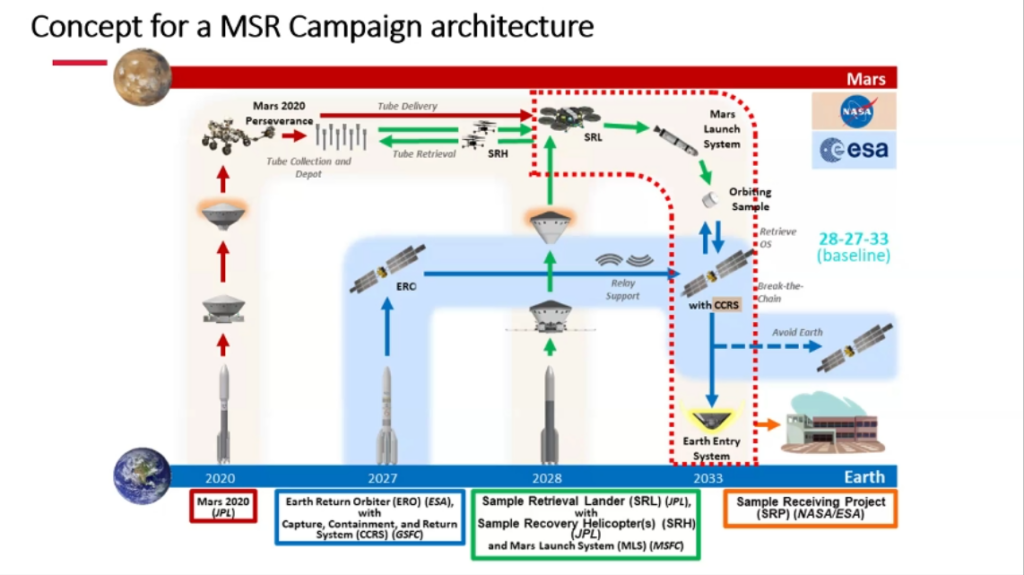
Once sampling is completed, the specimens should be retrieved and here MSR gets in the game. While MARS2020 with Perseverance was performed by NASA, the MSR is the result of the joint effort of both NASA and ESA. Here is the plan.
No earlier than 2027, the Earth Return Orbiter (ERO) and its payload, the Capture Containment and Return System (CCRS), will be launched to Mars but they will reach it only after the second launch of the program that will be performed the year after. During 2028 a second spacecraft would carry the Sample Retrieval Lander (SRL), the Sample Retrieval Helicopter (SRH) and the Mars Ascent Vehicle (MAV) to the planet’s surface. Perseverance would then transfer the samples to the SRL which would move the sealed tubes to the MAV. In case of issues with Perseverance, SRH, based on the knowledge acquired with Ingenuity, would recover the specimens from the depots thanks to its built-in arm. Once all the samples are properly stored inside the Mars Ascent Vehicle, the latter is launched into Mars’ orbit where it will meet CCRS. Engineers will, at this point, play a kind of orbital basketball match. The capsule containing the material collected by Perseverance should fly exactly inside the hold of the orbiting spacecraft which will seal it inside a containment device and it will head back towards the Earth. It may look like the hard part is done, but actually it is not. The aim of the mission is to collect evidence of ancient life but of course there isn’t any certainty; by the way, all the precautions to prevent any contamination of both Earth and Mars must be taken. Dr. Cataldo exactly works on this as we will see later on. On the way to the Red Planet, all the crafts that were going to reach the planet’s surface were handled to guarantee the lowest possible amount of terrestrial biomolecules, while coming back home, nothing that had been in contact with Mars will touch Earth. CCRS will release the Earth Entry Vehicle continuing then on an Earth avoidance trajectory. The samples are the only thing that was on the Red Planet and that will enter Earth’s atmosphere. Even in this case, many actions will be taken; the tubes will be stored inside a containment device and once on the ground, they will be carried in a high containment laboratory specifically built for them.
An engineering geek’s quick guide to MRS technologies
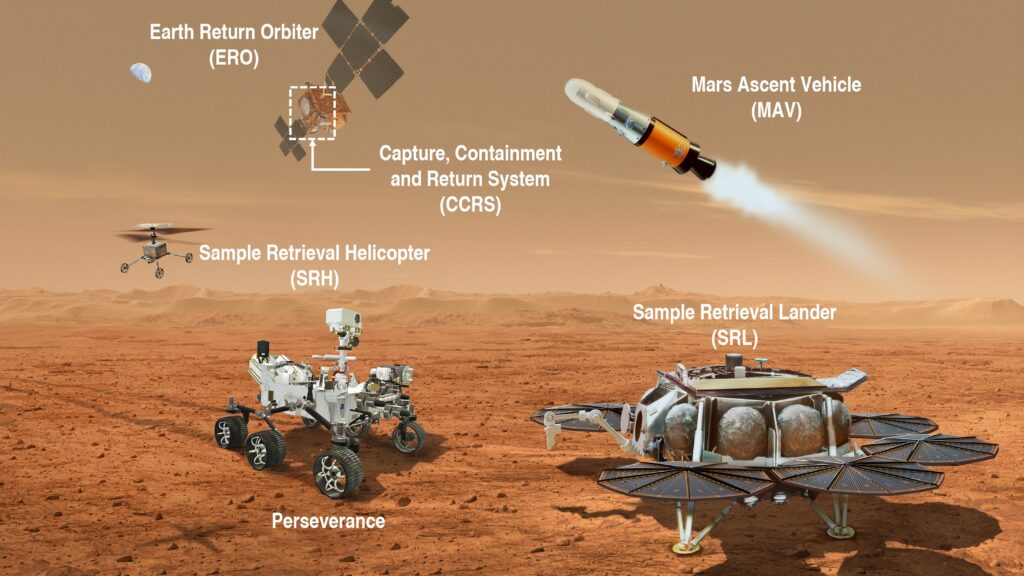
We have already talked about Perseverance and Ingenuity, so we will just see the main upgrades for the SRH. Its geometry is like the Ingenuity’s, but it is equipped with four wheels so that it will be able to move on the ground for short distances. A robotic arm can grab the samples and thus SRH can take them to the SRL.
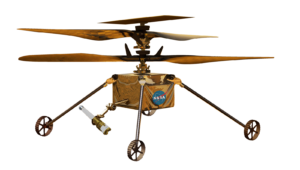
Talking about the Sample Retrieval Lander, weighting 3375 kg, it will be the biggest lander ever sent to Mars. When all the 5 solar panels are deployed it is 7.7 m long and 2.1 m high, a big guy. It is equipped with the Mars Ascent Vehicle, 2 SRH and a 2 m long robotic arm (provided by ESA). SRL is capable of a precise landing since it is required to touch down in a range of 60 m from Perseverance to speed up the load transfer. Imagine developing all these technologies just to crash into the rover losing all the samples… nah, a precise landing is definitely a must-have and NASA’s engineers know how to be accurate. I trust them.
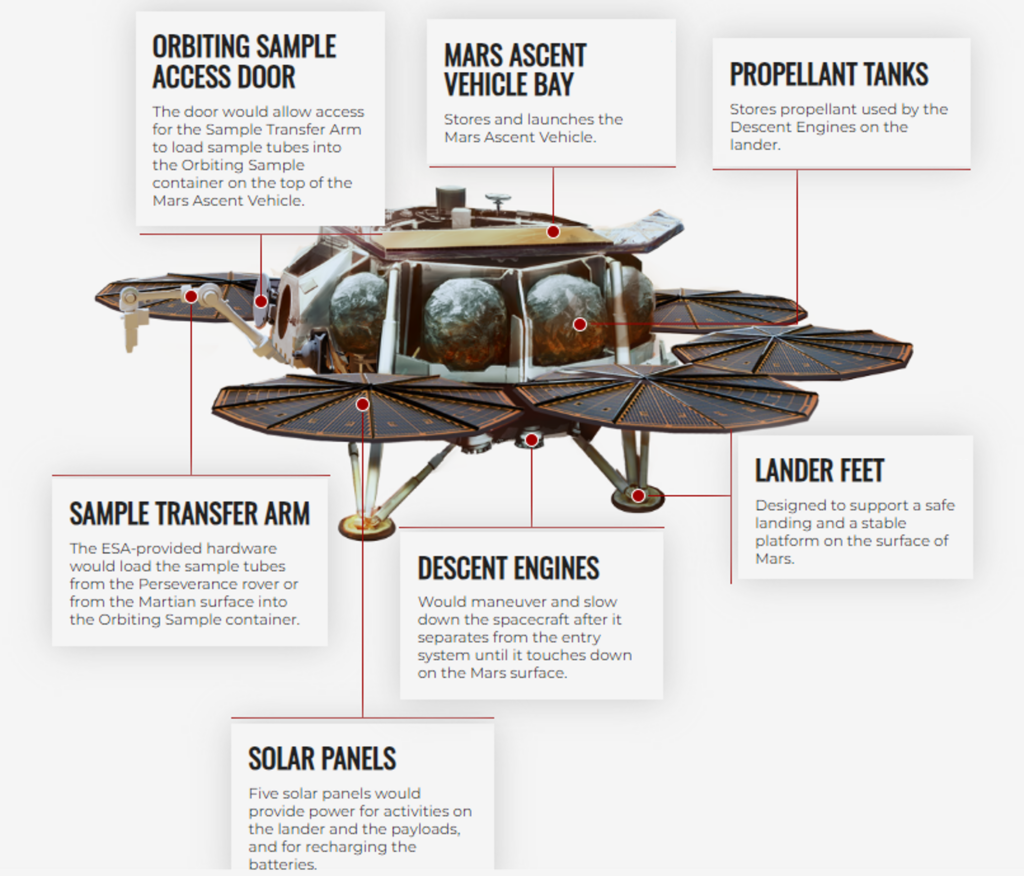
Carrying a missile (MAV), the lander will also perform the first ever rocket launch from another planet!
The Mars Ascent Vehicle is in fact a small two stages solid rocket, which will be tossed by the SRL and then will burn heading to the ERO in Martian orbit. It is only 3 m long, 0.5 m in diameter and 400 kg of weight and it is able to reach Mars ’orbit in 10 min thanks to its 4 km/s of speed.
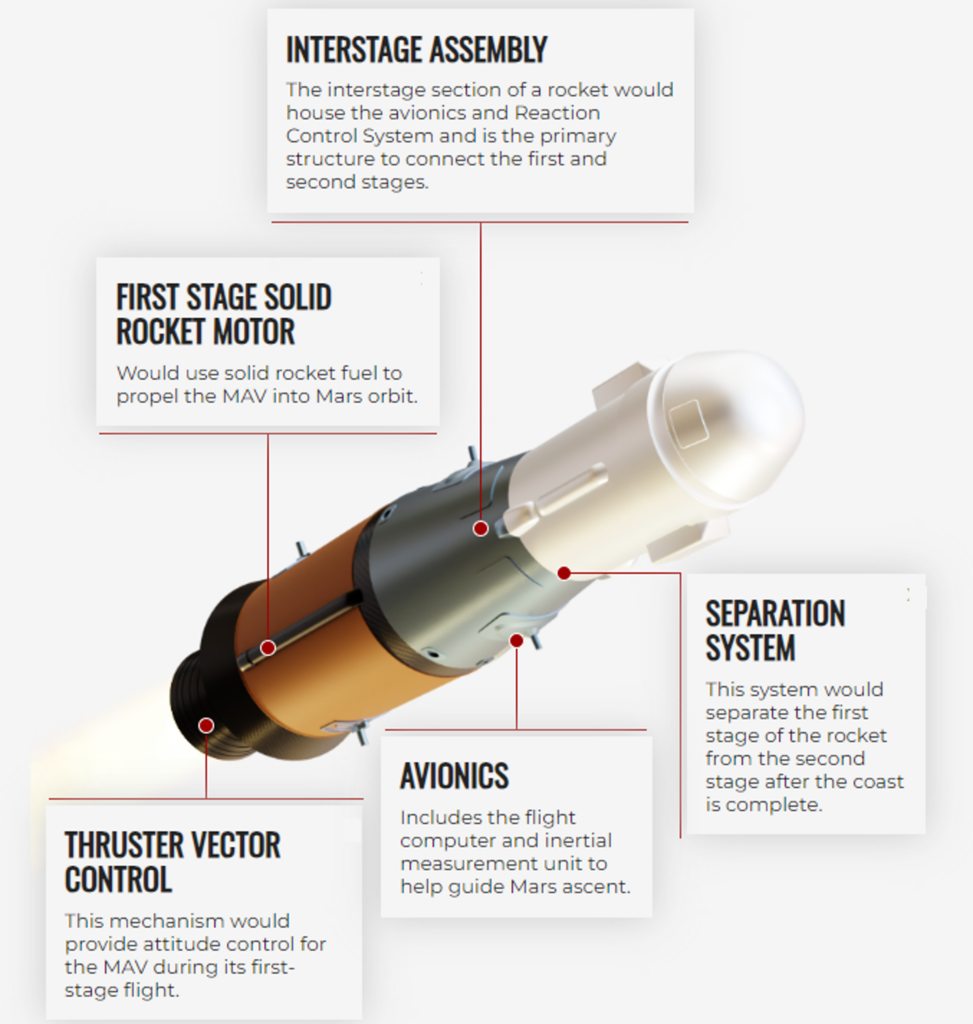
MAV is equipped with a thrust vectoring control system to change the attitude of the missile and with a capsule (OS) to safely hold the samples. The latter weights 11 kg, but the amount of rock and dust carried back home will just be 0.5 kg, the rest is only structure to prevent any contamination.
Once the capsule will have reached the orbit, ERO will perform a rendezvous maneuver to capture it.

The Earth Return Orbiter, provided by ESA, will locate and capture an item the size of a volleyball while orbiting around Mars, a first for an interplanetary orbiter. After the catch, it will seal the capsule in the Earth Reentry System which will in the concrete bring the samples back to our Planet’s orbit. ERO is equipped with big solar arrays, that with their 40 m span make it the biggest spacecraft ever orbited around Mars. It will use chemical propulsion to get to the Red Planet and electric propulsion to spiral down to Low Mars Orbit (LMO) and come back home. Once in LMO, ERO will also function as a medium for communication to and from the SRL. During its flight, the spacecraft will monitor the radiation level such that those data will be used to provide proper protection for future Mars crewed missions.

Let’s see more in detail how the Capture, Containment and Return System works. First of all, a LiDAR (Light Detection and Ranging) will help locate the Orbiting Sample (OS), then the capture cone will guide and force it toward the orientation mechanism which will identify the orientation of the capsule and rotate it in the proper direction. At the end of the capture enclosure, there is a UV Illumination System to sterilize the outer surface of the case. In the beginning, the right side of the capsule (referring to the depiction below) will be sterilized such that the robotic arm, fitted in the assembly enclosure, will be able to safely grab the container and pull it through the UV wall sterilizing the rest of it. As you can tell, NASA is taking the containment very seriously, as obvious, and everything is meticulously and cleverly planned. To guarantee the full separation between what touched the Red Planet and what will come back to Earth, further layers of protection are provided. ERO will continue its flight without reentering on the Planet, in fact, only the Earth Entry System will touch the ground. The capsule is moved from ERO to Secondary Containment Vessel stored in the EES, to provide redundancy to the containment. The EES itself is protected from thermal loads through an aeroshell and exploits a specific shielding for the micrometeoroid to prevent any damage during the flight.
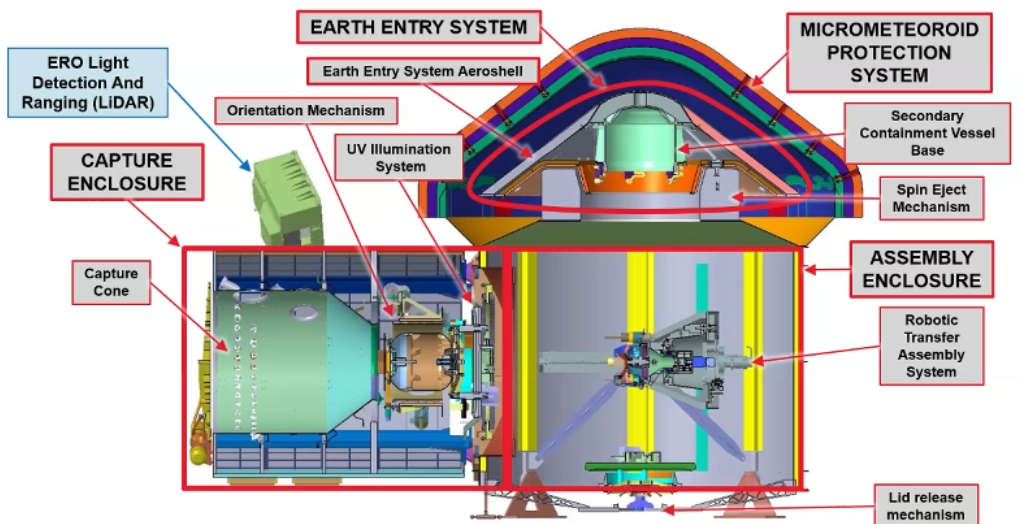
Planetary Protection
The entire mission aims to collect terrain samples in the search for signs of ancient life; of course, there is no certainty about its existence and about the success of the mission, but all the possible safety actions should be taken. NASA Procedural Requirements NPR 8715.24 states:
Planetary protection is the practice of protecting solar system bodies from harmful contamination by terrestrial materials to enable scientific exploration and protecting the Earth-Moon system from possible harmful extraterrestrial contamination that may be returned from other solar system bodies.
It is stated clearly that it works both ways. We cannot contaminate the other bodies in the solar system and we must prevent any contamination of Earth and Moon with any extraterrestrial contaminant. Dr. Cataldo is the planetary protection lead for the MSR CCRS project.
The Forward Planetary Protection will be provided assembling the spacecrafts in special cleanrooms satisfying the ISO-8, such that the allowable amount of biological materials will be extremely low. Furthermore, an inventory of all the organic materials present on the payload in amounts greater then 1 kg will be drawn up and an archive collecting organic material will be held. The effort here is mainly to track what we, very unlikely, may bring to Mars to have a chance of distinguishing what was already there in the future missions.
Moving to the Backward Planetary Protection, the concept here is to break the contact chain between Mars and Earth. In order to do so, at the CCRS they are working on three main factors:
- Particle Control: They want to leave behind all the particles they can. NASA is trying to minimize the number of gaps in the components that could potentially trap particles.
- Sterilization: The MSR Program plans to have the exterior surface of the OS exposed to both solar (in Mars orbit) and artificial (inside CCRS) UV light.
- Containment: This is probably the first thing anybody would think about, but this is NASA, so they are taking containment to an extreme level, with multilayered protection and redundancy.
Physically pursuing the containment not only means using many vessels, Russian Doll like, but also preventing all the spacecrafts that were in touch even just with the thin Martian atmosphere to come back to Earth. After releasing the Earth Entry System , ERO will follow an orbit heading far from our Planet and it will not come back before one century; a reasonable time to minimize the contamination risk. The specimens themselves are stored into two layers of vessels, to provide redundancy. Then they are put into the EES. Le’s give a closer look at the Earth Entry System.
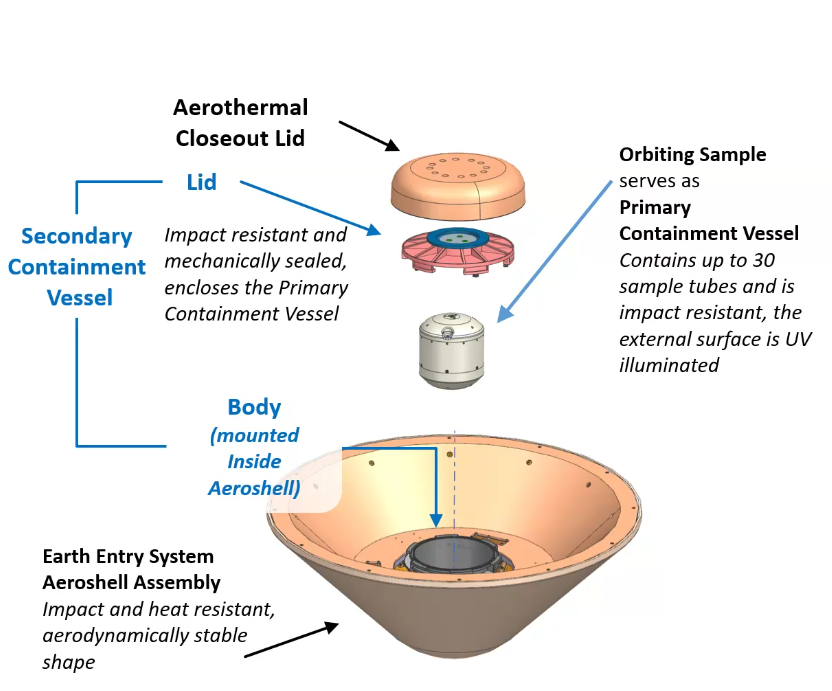
Basically, it is a reentry capsule with a very high containment level and reliability. The mission does not involve the sterilization of the samples themselves, thus the integrity of the containment system must be ensured. The NASA Planetary Protection Officer established the probability of releasing a particle must be below 1e-6; total reliability is here mandatory.
The EES takes advantage of a spin stabilization to maintain the proper orientation during the reentry and, in case of the failure of the latter, it is intrinsically stable, such that even if rotated bottom down, it moves back to the proper orientation. The parachute has been removed, since it could fail and so the capsule was sized to withstand a ballistic reentry occurring at 11.5 km/s and to sustain a deceleration of 125g.
An ablative heatshield has been implemented to sustain up to 1.5 kW/cm2 and a further layer to protect the shield from micrometeoroid and ensure its integrity until the contact with the atmosphere, has been designed.
The EES will fly back home with no active control or abort system, there is no way out, thus all the safety systems aim to guarantee that no Martian particle will spill from the capsule even in case of accident. After the impact on the US ground, a retrieval team will recover the sealed capsule and carry it to a high containment laboratory where the first tests will be carried out. They will assess the composition of the sample and check if it may be safe to transport them to other labs worldwide.
Happy New Year
The MSR campaign is an Agency Flagship Program meaning that it is part of a series of missions aiming to explore our Solar System. MSR’s program mates are missions of the caliber of Voyager, Cassini and Mars Science Laboratory (the one which landed Curiosity), so this is definitely a high-level mission. MSR is still under development, and all those technologies and deadlines may undergo some changes, but at the moment the launch is planned in just 3 years and I can’t wait to see the results… in 2033. Luckily, today is the 1st of January, so we have one year less to wait.
Happy New Year to the readers and a huge Good Luck to the amazing people who are making this possible!
https://www.youtube.com/watch?v=JIB3JbIIbPU
That’s what I call firework!
AUTHOR’S NOTE:
Please note that all information provided is accurate only as of the current date, as MSR is a dynamic and ongoing campaign still under development




